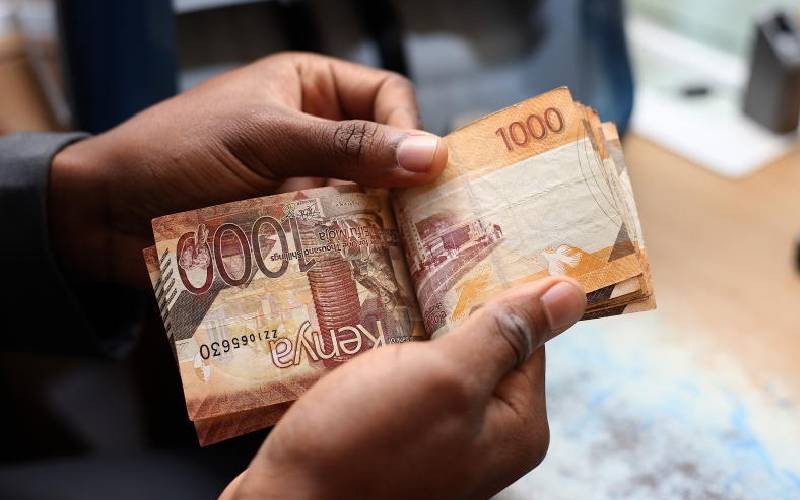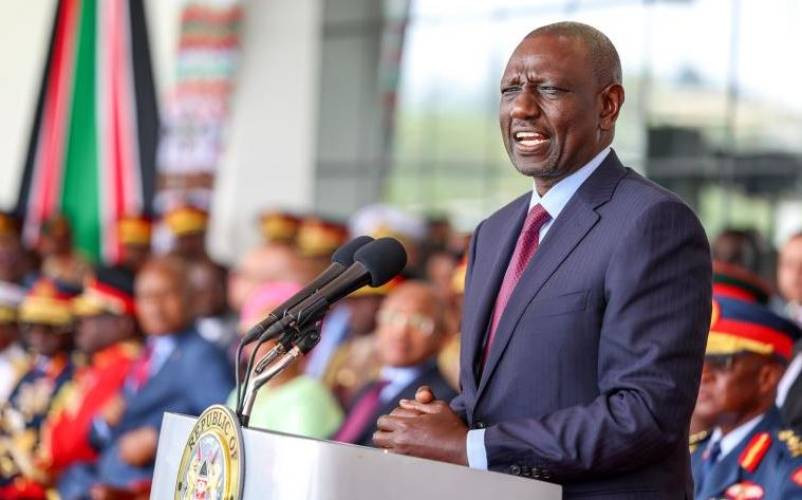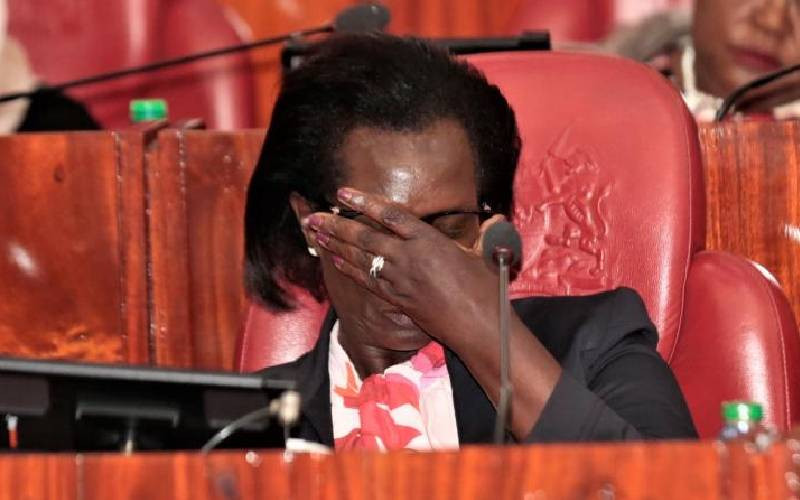The Government has given Cabinet and Principal Secretaries a massive house allowance seven months after announcing that ministers would take a 10 per cent wage cut to contain the bloated public wage bill.
The Salaries and Remuneration Commission (SRC) has asked the Treasury to set aside Sh45 million to start implementing the allowance from next month, according to a circular to top Government officials last week.
The new allowances will cost the taxpayer Sh92 million annually. Details of the package are contained in the circular.
Each Cabinet Secretary will now be entitled to a Sh200,000 monthly house allowance on top of a Sh800,000 monthly salary starting next month. On their part, principal secretaries, the accounting officers of ministries and State departments, will start earning a monthly house allowance of Sh150,000.
It means the country’s 18 Cabinet secretaries will in total take home Sh43.2 million annually in house allowances.
Since the Government constitutes 27 Principal Secretaries, then the taxpayer will contribute Sh49.6 million annually to find them homes.
Hived off details
Under the arrangement, the officials will get the allowance within the specified ranges regardless of whether they live in their homes or if their rental homes cost higher or less, a senior SRC official said.
It is not clear why SRC chairperson Sarah Serem hived off the details of the house allowances for the two state officials from a media statement issued to journalists when she released details of other house allowance earnings for public staff whose financial implication is Sh16.3 billion per year, an amount that would now go up in view of the new rates for Cabinet and Principal secretaries.
But she instead included the item on a circular to top public and State officials in various organisations.
In the circular dated December 10 2014, Ms Serem said the Commission had “reviewed the housing benefit to be provided to the Cabinet Secretaries and Principal Secretaries in consideration of the nature of their jobs”. “The annual cost of implementing this benefit will be about Sh90 million.”
She said the proposed benefit commences from January 2015 with a cost of Sh45 million to June 2015.
The circular entitled, “Review of Allowances in the Public Service” says the SRC, in setting the remuneration and benefits for State Officers in 2013, extended the benefit of provision of housing to the President, Deputy President, Speakers of Senate and National Assembly, the Chief Justice, Deputy Chief Justice, County Governors, and County Speakers due to the nature of their jobs.
In the Kenya Gazette Notice No 2885 of March 2013 on Remuneration and Benefits of State officers in the Executive, the SRC rules that the President and Deputy President “shall be housed by the State and provided with all commensurate (house) utilities and attendants”.
At the time, the salary for Cabinet Secretaries was set at about Sh800,000. That of a Principal Secretary was set at about Sh650,000.
Stay informed. Subscribe to our newsletter
But in the latest circular, Ms Serem said the Commission has further reviewed the housing benefit to be provided to the Cabinet Secretaries and Principal Secretaries in consideration of the nature of their jobs and approved that the housing benefit be provided to this cadre of State Officer by the Government within the following limits.”
The circular was copied to Attorney General Githu Muigai, Controller of Budget Agnes Adhiambo, Auditor General Ouko and all Principal Secretaries.
It was also copied to Chief Registrar of Judiciary Anne Amadi, Director of Public Prosecutions Keriako Tobiko and clerks of the of the Senate and National Assembly.
Others that received the document were secretaries of Constitutional Commissions, Vice-Chancellors of all Public Universities, Secretaries County Public Service Boards, Chief Executives of all State Corporations and Statutory Bodies.
Clerks of County Assembly Service Boards and County Secretaries of County Governments are also copied on the circular that Ms Serem signed.
Besides introducing house allowances for Cabinet Secretaries and Principal Secretaries, the Commission reviewed that payable to all other public servants including all teachers.
Ms Serem said the review was done to eliminate the existing disparities in the payment of house allowance and to compensate for the cost of housing that has appreciated considerably since the last review of the allowance in the year 2001.
The new rates range from Sh2,250 for the lowest paid officer to Sh80,000 for the highest staff member working in Nairobi, at job group T.
However in the circular, Ms Serem said the Commission reviewed the new allowances as part of its mandate of reviewing remuneration and benefits for public officers.
The new rates are based on a study of all allowances payable in the public service concluded in September 2014.
“The results of the study on allowances revealed that there existed significant variations on allowances payable across public service institutions,” the circular says.
Eliminate disparities
The variations, the Commission said, “range from duplications and wide disparities to varied eligibility criteria for payments that hamper harmonisation and standardisation”.
Based on the study findings, the Commission consolidated some allowances and abolished others, the circular says.
But “for purposes rationalisation, harmonisation, standardisation, equity, fairness, compensation for the cost of living adjustment and regulation in the Public Service, some allowances have been reviewed,” the statement says.
The allowances that were affected following recommendations of the review included house hardship, leave and subsistence.
The Commission introduced leave allowance for teachers ranging from Sh4,000 for the lowest paid, a P1, to a maximum of Sh10,000 for the highest paid, a chief principal. It also reviewed hardship allowance to be paid at a flat rate for all equivalent grades across the public service both at national and county governments. The amount for the allowance ranges from Sh2,800 for the lowest paid officer at job group A to Sh70,000 for the highest paid at job group T.
The move is meant to compensate for the cost of living and help attract skills to hardship areas, according to the circular.
In the new move, the Commission abolished pegging the allowance as a percentage of basic salary.
The Commission also introduced new rates of the allowance paid to facilitate officers to attend to official assignments away from their duty stations
It is expected that the new policy direction of paying hardship allowance as absolute values as opposed to being a percentage of basic salary for teachers will result in annual savings of about Sh650 million, according to SRC documents seen by The Standard on Sunday. In total, the cost of hardship allowance for all staff will be Sh3.5 billion.
But the new leave allowance for teachers will cost the tax payer Sh1.5 billion annually.
The Commission’s move to scrap and revise some allowances comes at a time it is pushing for measures to reduce the wage bill.
At Sh458 billion, Kenya’s public sector wage bill stands at a high of 12 per cent of the Gross Domestic Product (GDP) compared to the globally recommended average of seven per cent of GDP.
The measures prompted President Uhuru Kenyatta and Deputy President William Ruto to promise to take a 20 per cent pay cut in May this year. This pay cut was effected in September.
Although the cuts were to extend to State corporations, less than 20 of the more than 260 parastatal chiefs took the chop by September.
Two Cabinet Secretaries allowed the SRC to cut 10 per cent of their salaries by September.
 The Standard Group Plc is a
multi-media organization with investments in media platforms spanning newspaper
print operations, television, radio broadcasting, digital and online services. The
Standard Group is recognized as a leading multi-media house in Kenya with a key
influence in matters of national and international interest.
The Standard Group Plc is a
multi-media organization with investments in media platforms spanning newspaper
print operations, television, radio broadcasting, digital and online services. The
Standard Group is recognized as a leading multi-media house in Kenya with a key
influence in matters of national and international interest.
 The Standard Group Plc is a
multi-media organization with investments in media platforms spanning newspaper
print operations, television, radio broadcasting, digital and online services. The
Standard Group is recognized as a leading multi-media house in Kenya with a key
influence in matters of national and international interest.
The Standard Group Plc is a
multi-media organization with investments in media platforms spanning newspaper
print operations, television, radio broadcasting, digital and online services. The
Standard Group is recognized as a leading multi-media house in Kenya with a key
influence in matters of national and international interest.










